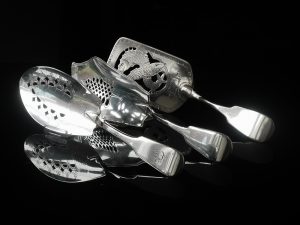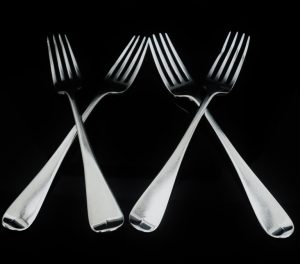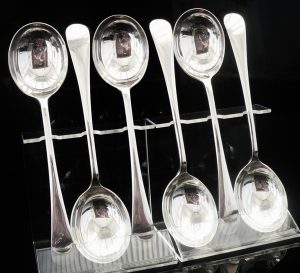Cutlery & Flatware
The history of silver cutlery and flatware is a tale of refinement, innovation, and cultural evolution. It spans millennia of human civilization. From ancient civilizations to modern societies, these essential utensils have played a crucial role in culinary traditions and social customs.
Ancient Civilizations
In ancient Mesopotamia and Egypt, wealthy elites dined with silver implements, showcasing their status and sophistication. Early silver flatware, consisting of rudimentary knives and spoons, was often reserved for ceremonial occasions and feasts.
The Greeks and Romans further refined silverware design, introducing a wider array of utensils, including forks and specialized serving pieces. Silver cutlery became synonymous with luxury and hospitality, reflecting the opulence of the banquet halls and dining rooms of antiquity.
The Middle Ages
During the Middle Ages, as feudal societies emerged in Europe, silver flatware became more widespread among the nobility. Craftsmen honed their skills, producing intricately wrought knives, forks, and spoons adorned with ornate patterns and decorative motifs.
The Renaissance
The Renaissance witnessed a resurgence of interest in classical aesthetics, inspiring silversmiths to create flatware sets inspired by ancient Greek and Roman designs. These pieces were prized not only for their functionality but also for their artistic merit, with elaborate engravings and sculptural details.
In the 17th and 18th centuries, silver flatware reached new heights of refinement and elegance. Royal courts and wealthy aristocrats commissioned elaborate sets of cutlery, often embellished with intricate filigree work, enamel, and precious gemstones.
The Industrial Revolution
The Industrial Revolution brought about significant changes in silverware production. As a result, advances in manufacturing techniques making flatware more affordable and accessible to a wider audience. Mass production methods allowed for the creation of standardized designs, catering to the burgeoning middle class.
The Victorian Era
In the Victorian era, silver flatware became an essential component of formal dining etiquette, with elaborate table settings featuring an array of specialized utensils for each course. Etiquette guides prescribed strict rules for the use of cutlery, reflecting the social norms of the time.
The Modern Era
In the modern era, silver cutlery and flatware continue to be valued for their timeless elegance and craftsmanship. Subsequently, while stainless steel has largely replaced silver as the material of choice for everyday utensils, sterling silver flatware remains a cherished heirloom and status symbol, passed down through generations as a tangible link to the past.
Whether displayed in formal dining rooms or used to elevate everyday meals, silver cutlery and flatware embody the enduring appeal of tradition, craftsmanship, and refinement.
-

Apostle Spoons (30)
-

Basting Spoons (33)
-

Berry Spoons (24)
-

Caddy Spoons (139)
-

Christening Cutlery (42)
-

Demitasse/Coffee Spoons (69)
-

Dessert Spoons (177)
-

Egg Spoons (33)
-

Fish Slices (33)
-

Forks (260)
-

Jam/Preserve Spoons (45)
-

Knives (134)
-

Marrow Scoops (12)
-

Miscellaneous (98)
-

Salt & Mustard Spoons (120)
-

Serving Spoons (190)
-

Soup (15)
-

Souvenir Spoons (151)
-

Teaspoons (390)


